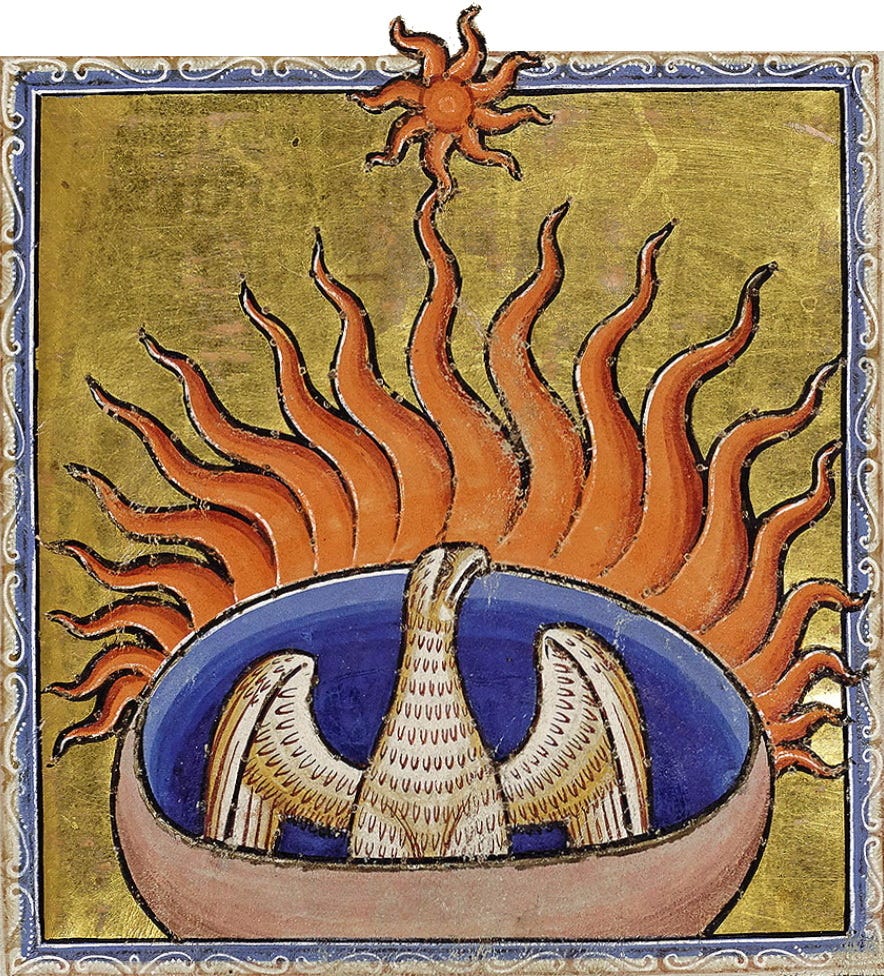Happy Palm Sunday, everyone. I don’t have a new homily for today, so thought I’d share this essay I wrote for my Aleteia column about the symbolism of palm trees and the phoenix. It really is remarkable how much depth there is in this topic, with Christological implications from the very beginning, and I feel like I barely scratched the surface.
When Solomon built a temple for God in Jerusalem, he had stone-carvers cover the walls with a mysterious symbol. “On the walls all around the temple, in both the inner and outer rooms,” say the Scriptures, “he carved cherubim, palm trees and open flowers.” (1 Kings 6:29) The carvings of angels I understand, and of course flowers make for lovely decorations, but I’ve long puzzled over the palm trees.
The detail is clearly important. In Ezekiel’s famous vision of the temple, he notices, “the faces of the projecting walls were decorated with palm trees,” and he also says, “from the floor to the area above the entrance, cherubim and palm trees were carved on the wall of the outer sanctuary.” The temple is a veritable forest of palms.
Our Lord’s final entrance into Jerusalem takes place in the midst of palms as worshipers waved the branches and placed them under his feet. In Heaven, St. John sees the multitude of saints in the throne room of God, praising God and holding palm branches in their hands.
What’s the symbolism of the palm? I believe there are two meanings, one that would have been known to the builders of the temple and one that was a hidden prophecy of Christ…
The rest of the essay can be found here:
BONUS CONTENT - I should also have an essay posted sometime today at Aleteia on the topic of Fig Monday (I don’t know the link yet, my essays usually post sometime on Sunday but the timing is variable). Like palms, figs are incredibly interesting poetic symbols that I could talk about all day. On Fig Monday, the Gospel reading for Holy Mass is the mysterious cursing of the fig tree that St. Mark associates with the cleansing of the temple. It’s a piece of literary brilliance. Check out the essay if that particular Gospel story has been confusing to you (like it was to me for so many years).


